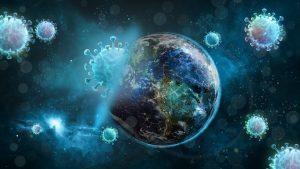This grim but revolutionary DNA technology is changing how we respond to mass disasters


Meanwhile, after the fires, Filipino families faced particularly stark barriers to getting information about financial support, government assistance, housing, and DNA testing. Filipinos make up about 25% of Hawaii’s population and 40% of its workers in the tourism industry. They also make up 46% of undocumented residents in Hawaii—more than any other group. Some encountered language barriers, since they primarily spoke Tagalog or Ilocano. Some worried that people would try to take over their burned land and develop it for themselves. For many, being asked for DNA samples only added to the confusion and suspicion.
Selden says he hears the overall concerns about DNA testing: “If you ask people about DNA in general, they think of Brave New World and [fear] the information is going to be used to somehow harm or control people.” But just like regular DNA analysis, he explains, rapid DNA analysis “has no information on the person’s appearance, their ethnicity, their health, their behavior either in the past, present, or future.” He describes it as a more accurate fingerprint.
Gin tried to help the Lahaina family members understand that their DNA “isn’t going to go anywhere else.” She told them their sample would ultimately be destroyed, something programmed to occur inside ANDE’s machine. (Selden says the boxes were designed to do this for privacy purposes.) But sometimes, Gin realizes, these promises are not enough.
“You still have a large population of people that, in my experience, don’t want to give up their DNA to a government entity,” she says. “They just don’t.”

BRYAN TARNOWSKI
The immediate aftermath of a disaster, when people are suffering from shock, PTSD, and displacement, is the worst possible moment to try to educate them about DNA tests and explain the technology and privacy policies. “A lot of them don’t have anything,” Gin says. “They’re just wondering where they’re going to lay their heads down, and how they’re going to get food and shelter and transportation.”
Unfortunately, Lahaina’s survivors won’t be the last people in this position. Particularly given the world’s current climate trajectory, the risk of deadly events in just about every neighborhood and community will rise. And figuring out who survived and who didn’t will be increasingly difficult. Mann recalls his work on the Indian Ocean tsunami, when over 227,000 people died. “The bodies would float off, and they ended up 100 miles away,” he says. Investigators were at times left with remains that had been consumed by sea creatures or degraded by water and weather. He remembers how they struggled to determine: “Who is the person?”
Mann has spent his own career identifying people including “missing soldiers, sailors, airmen, Marines, from all past wars,” as well as people who have died recently. That closure is meaningful for family members, some of them decades, or even lifetimes, removed.
In the end, distrust and conspiracy theories did in fact hinder DNA-identification efforts on Maui, according to a police department report.






